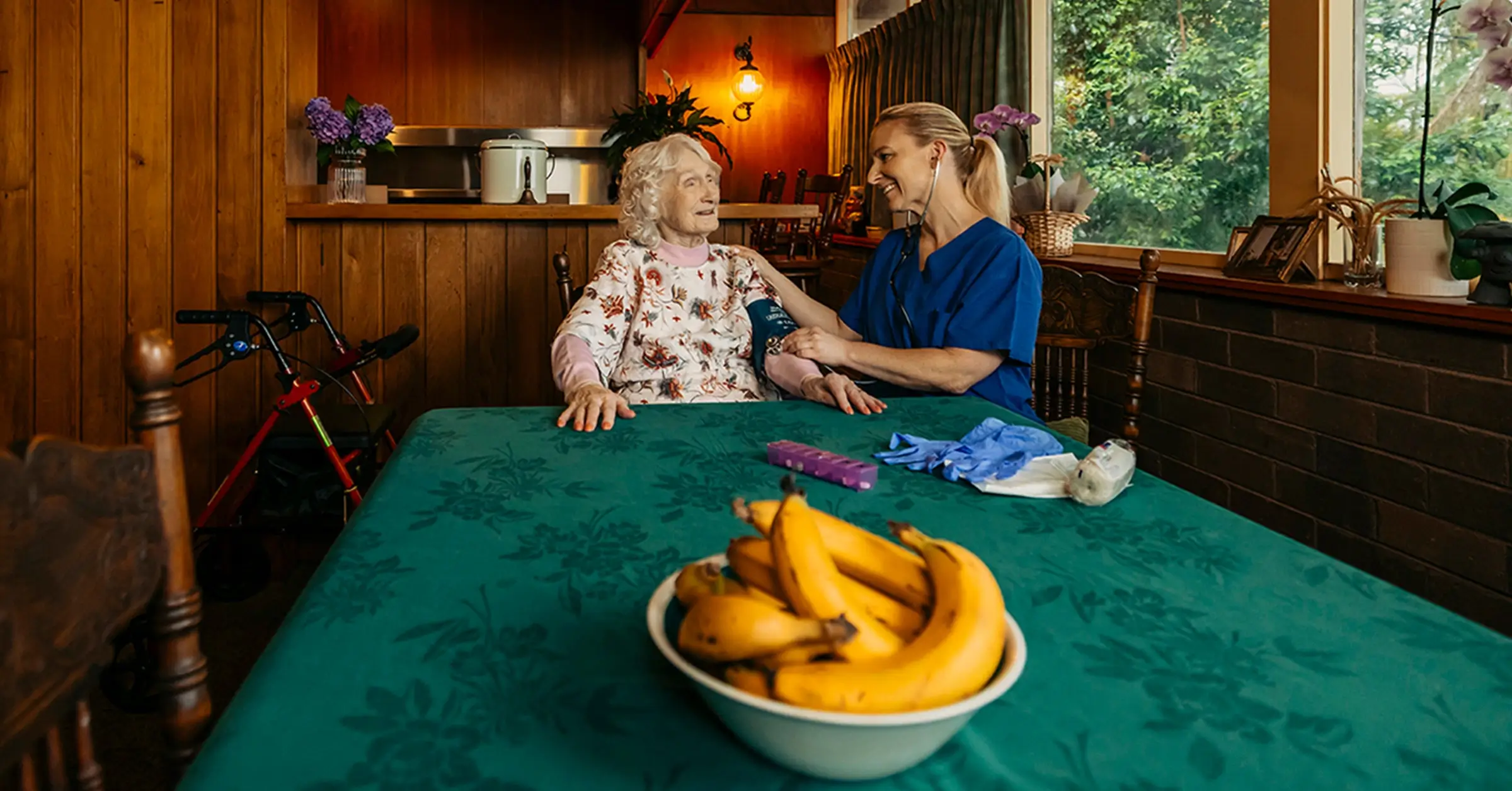Observed every year on 23 September, the International Day of Sign Languages (IDSL) was originally proposed by the WFD, and was first celebrated in 2018. Since then, it’s been hailed as an opportunity to support and protect the linguistic identity and cultural diversity of all D/deaf people and other sign language users.
IDSL is also celebrated as part of the National Week of Deaf People (19-25 September).
According to the World Federation of the Deaf (WFD), there are more than 70 million deaf people worldwide. More than 80% of them live in developing countries and collectively, they use more than 300 sign languages.
According to census data, approximately 16,000 Australians use Auslan.
On the International Day of Sign Languages 2022, we spoke to independent support workers on Mable, Spring and Catherine, who talked about their passion for Auslan and how it has helped them support those with hearing disabilities and has personally benefited them.
What sparked your interest in learning Auslan?

Spring: In 2016, my family moved from Hobart to Adelaide, but by then, I’d missed the opportunity to choose my electives at school, so I was placed in whichever classes had availability. One of these classes was a LOTE (Language Other Than English) Auslan class with a deaf teacher, and it was here that I began my journey with Auslan.
Catherine: My mother was deaf and used Irish Sign Language, so I was interested when I received a notification of an Auslan Community Class in Auslan being offered. From then on, Auslan grabbed me!
How has learning Auslan personally benefited you?
Spring: Learning Auslan has had a tremendous impact on my life. After moving from Adelaide to Melbourne, I completed my Diploma of Auslan at Melbourne Polytechnic, and over those two years I made some incredible friendships and connections with other like-minded individuals. Learning Auslan has changed my verbal communication, as I now unconsciously use gestures and communicate in a more visual and expressive manner.
Catherine: Personally, it has created more connectivity and given me a purpose: to become an interpreter in Auslan. I have made more friends, both through study and interaction with the Deaf community and feel it is now my turn to give back all the support I received growing up.
How did you start using your knowledge of Auslan as an independent support worker on Mable?

Spring: Initially, I began working with clients who were in need of assistance with daily tasks, social support, or achieving goals (finding work, moving out of home, etc.), who were also d/Deaf and wanted a support worker with some understanding around this as well as fluency in Auslan. Later, I also began working with clients who were audiologically deaf but were not fluent in Auslan and wanted to learn it. So, they booked me through Mable to act as an Auslan tutor for one-on-one sessions in addition to the Auslan classes that they were undertaking at the time.
Catherine: I have begun with introducing more vocabulary into the conversation with my client who’s deaf. That way, he is improving his communication with more than just a basic language used everyday.
What is different about supporting a client who is d/Deaf?
Spring: The main differences in supporting clients who are d/Deaf or hard of hearing will be in the way you communicate with each other. If you can both sign, great! If not, you may have to get creative and find what works for the two (or more) of you.
Catherine: There are some things to bear in mind:
- When supporting a d/Deaf client, it is always important to ask them what they want and to give them options – not just assume and force the hearing view of what life is.
- Their impairment is often coupled with other disabilities. For example, they may have varying degrees of blindness, cerebral palsy, or Autistic Spectrum Disorder. Every person is different and requires a tailored approach.
- Support workers need to be flexible with communication. They may also have different levels of education, some may have limited fluency in English. Overall, they may need clarification, patience and flexibility in communication. It’s important to check they know what you want and why, so as to reduce misunderstandings and stress.
- If they look away, they are indicating they are not interested or frustrated. It takes a lot of energy to focus and it becomes exhausting. Eye contact in conversation and the use of non-manual features, for example, facial expressions and nodding are critical elements of communication with a d/Deaf person. Obviously, looking at them with a blank face will leave them wondering if you understand them and they will lose interest or become frustrated.
What are some dos and don’ts about supporting a d/Deaf client?
Spring:
- Do: Be flexible in the ways you provide support. No two d/Deaf people will be the same or have the same support and communication needs.
- Do: Sit or stand facing the d/Deaf person and making eye contact when communicating, remove things such as hats and sunglasses where appropriate to keep your face and your expression unobstructed.
- Don’t: Face away from the d/Deaf person, don’t cover your face; especially your mouth. Don’t assume the d/Deaf person communicates in a certain way (i.e. they speak, sign, read lips, use hearing aids, or have cochlear implants, etc.)
Catherine:
- Do: Include them in the conversation and ensure they understand what is going on. It is very stressful for Deaf people to not be fully informed of what is happening to them, such as in medical settings, surgery, emergency situations. Often, masks are worn in these settings. In the mask-wearing mandate on Queensland Health, it is stated that
‘When communicating with Deaf or Hard of Hearing people it is legal for you to lower your mask’.
Being able to see the person’s face is part of following the conversation. Don’t assume all Deaf people can lip read, which only picks up about 30% of the communication. For some, however, it supplements the sign language.
- Do: Include the d/Deaf client by signing in their presence. Otherwise, they are excluded and it is using hearing privilege. One of the principles of the Deaf community is inclusion – no one is left behind. Therefore, it is rude to have a spoken conversation without interpreting in their presence. Another rule of the Deaf community is to take turns at communicating. Let them have a turn – or they will lose interest and feel left out.
- Don’t: Never assume they can hear if they are wearing a hearing aid or cochlear implant. Their use of them is obviously limited and very tiring for them. They take them out all the time to have a break. If you’re not sure about their hearing aid or cochlear implant, just ask them, ‘How do you find this helps you?’ (Make it an open question).
- Don’t ask them why they are d/Deaf. They’re not interested and over it.
- Don’t ever ask how they manage in their lives as a d/Deaf person (for example: How do you drive a car?).
Tell us about a memorable moment with a client you were supporting through sign language?
Spring: I was working with a client who was audiologically deaf but did not sign, and who had contracted me as an Auslan tutor in addition to his Auslan classes. Initially, communication was a challenge, and his Auslan was at its most basic level. Then one day, when we were at a park, practising the use of depiction in Auslan (a language feature that extends beyond the traditional mode of lexical words or signs in a language that have a set definition or definitions) and I asked the client if he knew where the bathroom was, and he used the depicting skills to clearly explain where the nearest bathroom was!
Catherine: I have had many of these with my d/Deaf client. Recently, I finger spelled options to him. Did he want to eat (a snack) or walk more? I was bowled over when he finger spelled E-A-T! It felt amazing to see that I had opened a window for him to communicate! In another session (at a library), as he looked at some illustrations in picture books, I demonstrated DOG in Auslan and later DINOSAUR. As I watched, he formed the Auslan signs for these! I felt such joy for him to be able to communicate.
How has being an independent support worker on Mable benefited you?
Spring: I absolutely love my work through Mable. I love the independence and agency that I have through my work, as well as the flexibility that the platform provides in terms of hours, workload, and the nature of the support that I provide. Mable enables me to do what I’m passionate about, and to have a real, positive impact on the lives of my clients and their families.
Catherine: Through Mable, I feel enthusiastic and motivated from being connected with a d/Deaf client. It has enriched my life and goes toward fulfilling my passion to empower Deaf people in communication and inclusivity.
The system on Mable is easy, efficient and simple to use, so that I can concentrate on giving Deaf people the best life. I very much appreciate that.
Your interests can be a gamechanger in building your small business on Mable
If you are an independent support worker on Mable who has an interest in learning Auslan to support clients through Mable, you can upskill too. From 2023, a Diploma in Auslan TAFE course will be offered for free. And if you already have certified training in Auslan, make sure you list these on your Mable profile. Upskilling can be crucial to building your business as an independent support worker through Mable.
FAQs
Auslan is its own unique sign language, derived from British Sign Language (BSL) with which it shares 82 percent of signs. It is a two-handed language, requiring both hands for fingerspelling and gestures. Conversely, American Sign Language (ASL) uses just one hand. There are sign languages from all over the world that use their own specific hand signs and dialects, and generally speaking, none can communicate fluently with another.
How long it takes to learn Auslan may depend on the individual’s commitment to and motivation for learning Auslan. For someone who is learning purely out of interest in taking on another language, it might be an activity that they do part-time for fun. Or, perhaps they want to learn Auslan so they can communicate with family members, friends or others in the community who are d/Deaf.
In any case, DeafNav says that a Diploma of Auslan TAFE course takes two years of full-time study.
You might be interested in

When a support relationship just clicks: Meet Geoff and Tony
Meet Geoff and Tony, a support work duo who just click. Here they tell us why sharing common interests is so great in support relationships.

Tips for building trust with your support worker
Trust is the foundation of effective communication and positive outcomes in care relationships. Here’s how you can work to build trust with your support worker.
